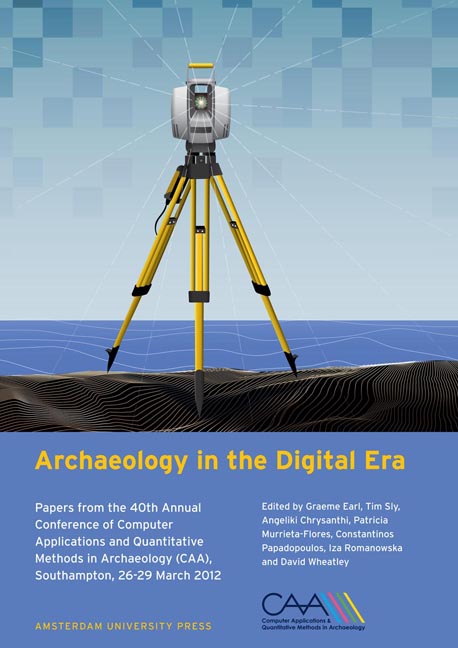 Archaeology in the Digital Era
Archaeology in the Digital Era Reconstruction of Ruined Archaeological Structures Using Structural Analysis Methods
Published online by Cambridge University Press: 16 February 2021
Summary
Abstract:
Examination of material remains of previous human societies help study past human behaviour in archaeology. Some of the most important remains are the ruins of historic buildings. The use of computerized recording equipment and three-dimensional drawing are essential tools for researchers to recreate a ruined structure for reconstruction and further analysis. However, the reliability of the precision of the reconstructed model can be controversial due to the absence of sufficient historical information and fabric loss. In this study, structural analysis has proved to be an alternative or confirming tool for reconstruction in addition to site survey and historical investigation. On the basis of the stability of the ruined structures possible hypothetical forms can structurally be analysed under the associated loads and the resulting behaviour can be assessed to determine its actual form. Therefore, based on a multidisciplinary methodology, a novel approach to reconstruction of a historic structure has been presented in this paper. Following laser scanning to measure the complex geometry of the fallen structure and geophysical techniques to estimate the properties of inaccessible parts, a finite element model has been generated and some original forms of the construction has been evaluated based on the static analysis results.
Keywords:
Cultural Heritage, Reconstruction, Original Form, Structural Analysis, Archaeological Techniques, Pozzolana Concrete
Introduction
The historic environment provides a unique record of past human activity. The vision, abilities and investment of successive societies have formed the distinctive qualities of this environment. Therefore, it is a valuable resource, providing a sense of continuity and identity (Heritage 2008). Amongst the cultural heritage components, historic buildings have a significant place. Thus, documentation of heritage buildings is critical for their protection and restoration (Yastikli 2007). In archaeology, various methods are used. Computerized recording equipment and three-dimensional plotting are widely used tools (Sinning-Meister, Gruen, and Dan 1996; Park et al. 2007). However, documentation can be challenging work depending on the extent of the remains of the past structures. Absence of sufficient historical information and loss of building components and fabric may substantially decrease the reliability of the reconstructed models.
- Type
- Chapter
- Information
- Archaeology in the Digital EraPapers from the 40th Annual Conference of Computer Applications and Quantitative Methods in Archaeology (CAA), Southampton, 26-29 March 2012, pp. 164 - 176Publisher: Amsterdam University PressPrint publication year: 2014


